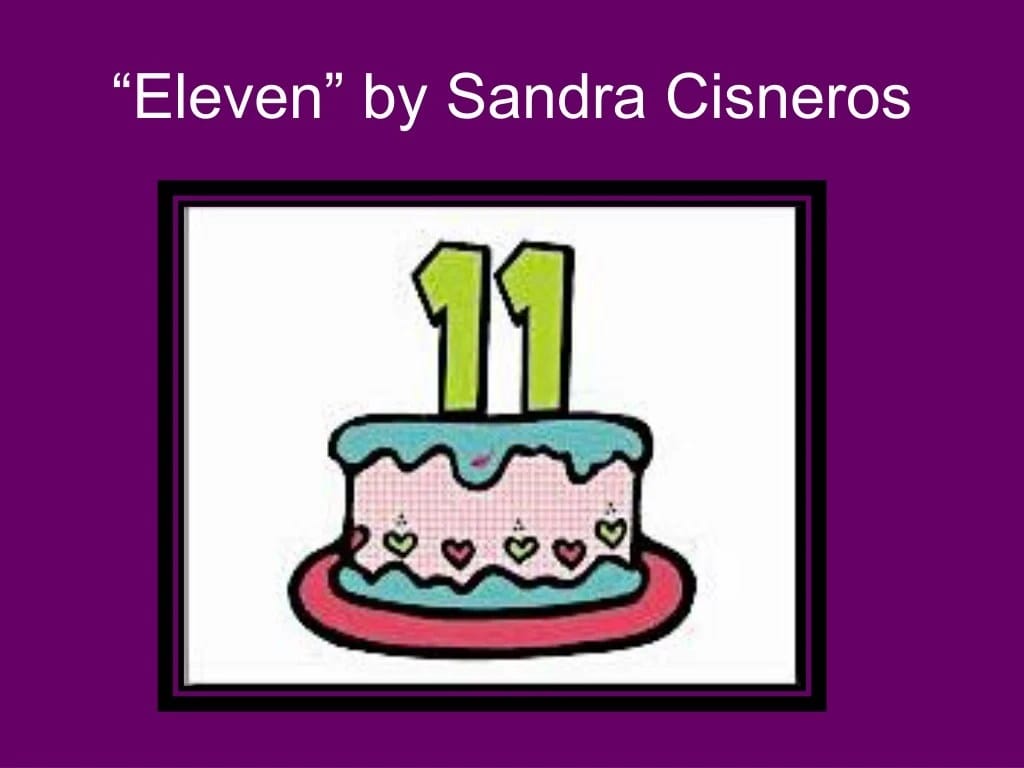Rachel’s Eleventh Birthday: A Coming-of-Age Crisis
Sandra Cisneros’s short story, “Eleven,” captures the confusing and often painful experience of growing up. The story centers on Rachel, a young girl whose eleventh birthday becomes a poignant exploration of vulnerability and shame. The catalyst for this emotional turmoil? A simple, red sweater. This seemingly insignificant object transforms into a potent symbol, representing the weight of adult expectations and the challenges of self-discovery. The lush greenery of an ecosystem that rivals only the rainforest in biodiversity and the bohemian ambiance of the expressionist cafe switzerland stand in stark contrast to the confined and emotionally charged setting of Rachel’s classroom.
The sweater incident isn’t merely about a piece of clothing; it triggers a cascade of emotions within Rachel. She feels misunderstood, exposed, and utterly powerless. This resonates with the challenges many children face when their perspectives are dismissed or overlooked by adults. Cisneros masterfully uses this incident to symbolize the power dynamics children often navigate and their struggle to assert their voice.
One of the most striking aspects of “Eleven” is Cisneros’s portrayal of the layered nature of identity. Rachel eloquently expresses this when she says, “I’m eleven today. I’m eleven, ten, nine, eight, seven, six, five, four, three, two, and one.” This suggests that growing up isn’t a linear progression; it’s more like carrying all your previous ages within you. On her eleventh birthday, these younger selves feel very present for Rachel, each with their own vulnerabilities and insecurities.
Cisneros’s use of simple, direct, childlike language allows us to connect with Rachel on a deeply personal level. We hear her frustration, feel her embarrassment, and understand her struggle. “Eleven” isn’t just a children’s story; it’s a story for anyone who’s ever felt the sting of shame, the confusion of growing up, or the frustration of not being heard. It’s a timeless exploration of the human experience, suggesting that even in our most vulnerable moments, there’s a strength within us waiting to be discovered. While the red sweater might symbolize the unwanted burdens of adulthood, Rachel’s story ultimately suggests we have the power to find our own voice and embrace the complex journey of becoming ourselves.
Some readers might see the red sweater as representing societal expectations, while others may focus on its connection to Rachel’s feelings of inadequacy. These varying perspectives enrich the story and invite us to explore its deeper meanings.
Eleven: Exploring Identity and Emotion
“Eleven” is more than just a birthday story; it’s a powerful examination of the confusing and overwhelming experience of growing up. Rachel, turning eleven, doesn’t feel the expected surge of maturity. Instead, she feels all her younger selves still within her. This likely suggests that growing up isn’t a simple transition but rather an accumulation of past experiences.
The story centers on the uncomfortable classroom situation with the red sweater. Mrs. Price’s insistence that the sweater belongs to Rachel, despite her protests, represents how adults can dismiss children’s feelings and silence their voices. This probably resonates with many readers who have experienced similar situations. The red sweater becomes a symbol of this injustice, of feeling small and misunderstood.
“Eleven” doesn’t offer a neat, happy ending. Rachel’s upset doesn’t magically disappear. This lack of resolution likely mirrors the messy reality of childhood, where unfair events can leave a lasting impact. It also highlights the importance of listening to children and validating their emotions. Some might interpret the ending as sad, while others might find it realistic and powerful. Ongoing research in child psychology reinforces the significance of early childhood experiences in shaping emotional development.
Different interpretations of “Eleven” exist. Some scholars might focus on the cultural context of Rachel’s Mexican-American heritage, while others may analyze Cisneros’s literary techniques. Regardless of the interpretation, “Eleven” remains a touching exploration of growing up.
The Moral of Eleven: Lessons in Empathy and Understanding
“Eleven” offers not one simple moral, but a collection of insights into childhood and the human experience. One key takeaway may be that aging doesn’t automatically bring wisdom. Rachel, at eleven, is still learning to manage her emotions, highlighting that emotional maturity develops over time.
The story also illuminates the power imbalance between children and adults. Mrs. Price’s dismissal of Rachel’s feelings demonstrates how easily adults can overlook a child’s emotional world. This can have long-lasting effects, potentially hindering a child’s ability to trust themselves and others. “Eleven” encourages us to listen to children and validate their emotions, even when they seem insignificant to us.
Rachel’s description of age as nested dolls emphasizes the idea that our past selves persist within us, influencing how we experience the world. There is debate about additional morals or themes. Some scholars suggest themes of poverty and class, symbolized by the sweater, while others focus on navigating cultural identities.
“Eleven” likely emphasizes acknowledging and respecting the emotional lives of children. Even small acts of kindness or unkindness can have a profound impact.
Rachel’s Uncomfortable Birthday: The Plot of Eleven
“Eleven” follows Rachel, an eleven-year-old girl, on a birthday that takes an unexpected turn. The story delves into the experience of childhood vulnerability and the complexities of emotions at that age.
The central incident revolves around a ratty, red sweater. Mrs. Price insists it’s Rachel’s and makes her wear it, despite Rachel’s mortification and protests. The sweater symbolizes the weight of expectations and the feeling of being forced into something that doesn’t fit. This incident further highlights the awkwardness and vulnerability of childhood and the power dynamics between teachers and students. Mrs. Price’s dismissal of Rachel’s protests may remind readers of similar childhood experiences where adults failed to understand their perspective.
Throughout the ordeal, Rachel reflects on her past selves. This suggests that our past experiences continue to shape us, even as we grow and change. The story’s impact comes from its universality. Rachel’s experience resonates with readers of all ages, reminding us of the importance of empathy and understanding. “Eleven” suggests that while growing up can be tough, we are not alone in our feelings.
Different interpretations of the story’s symbolism and themes exist, enriching our understanding. Ongoing discussions in children’s literature often explore these varying perspectives, adding to the ongoing conversation about the meaning of “Eleven.”
Key Insights from “Eleven”
- Coming-of-Age: “Eleven” offers a poignant portrayal of a young girl navigating the complex transition into adolescence.
- Identity: The story explores the layered nature of identity and the persistent presence of our younger selves.
- Power Dynamics: “Eleven” subtly critiques the power imbalances between children and adults, particularly in classroom settings.
- Emotional Vulnerability: The story emphasizes the importance of validating children’s feelings and acknowledging their emotional experiences.
- Symbolism: The red sweater acts as a powerful symbol of shame, vulnerability, and the imposition of unwanted identities.
- Narrative Voice: Cisneros’s use of a child’s perspective and simple language creates an intimate and relatable narrative.
- Cultural Context: Some interpretations of the story highlight the potential influence of Rachel’s Latina heritage on her experience.
- Lasting Impact: “Eleven” suggests that seemingly minor incidents in childhood can have a lasting impact on our emotional development.
By focusing on these key insights, “Eleven” becomes a valuable resource for understanding the complexities of childhood and the importance of empathy. The story’s enduring popularity suggests that its themes continue to resonate with readers of all ages.
- Unlocking 2-Letter Words with U: The Definitive Guide - April 4, 2025
- Unlock Words with the Letters THREE: Top Unscramble Tools 2025 - April 4, 2025
- Master Scrabble: X & Z Words for High Scores - April 4, 2025
















